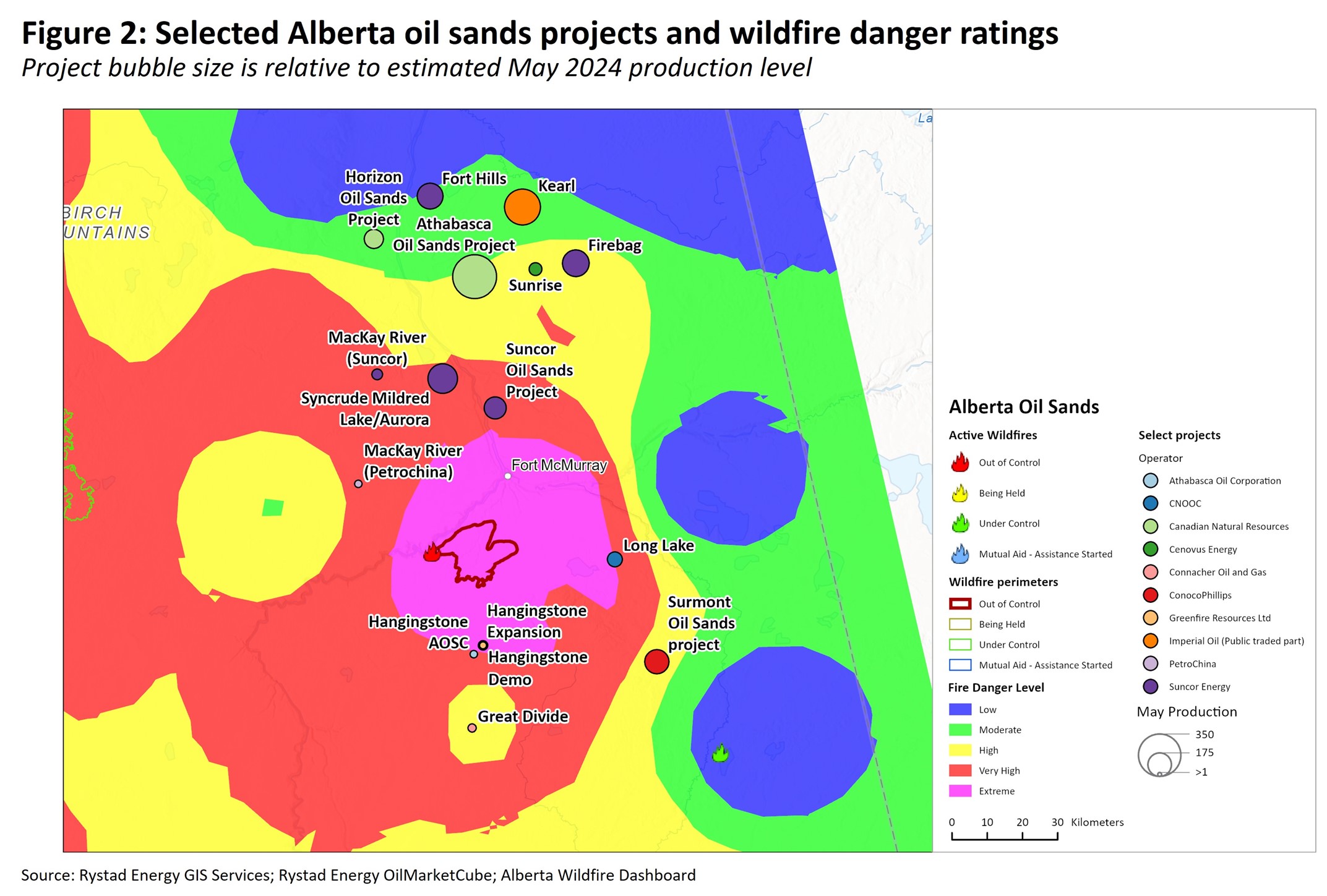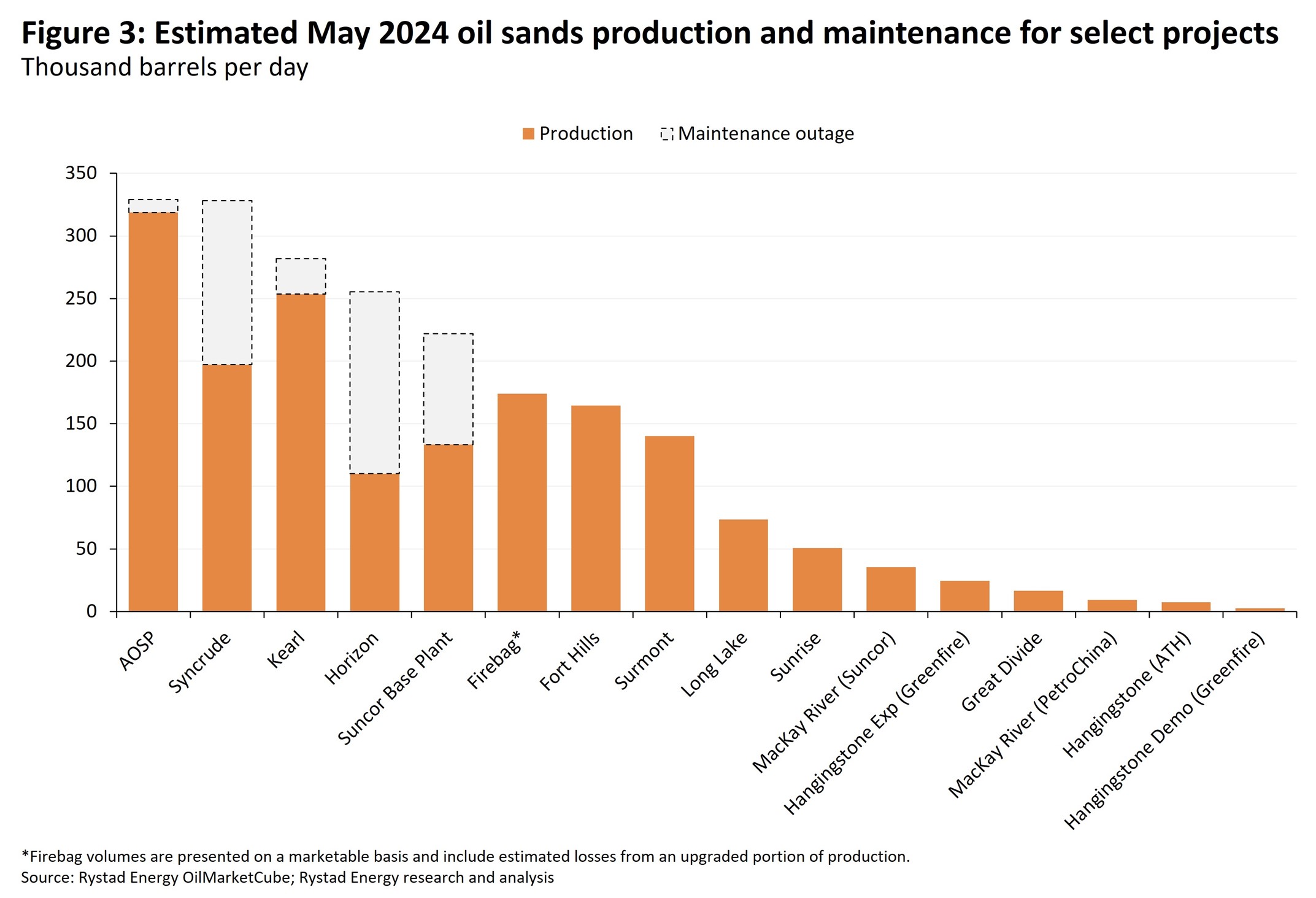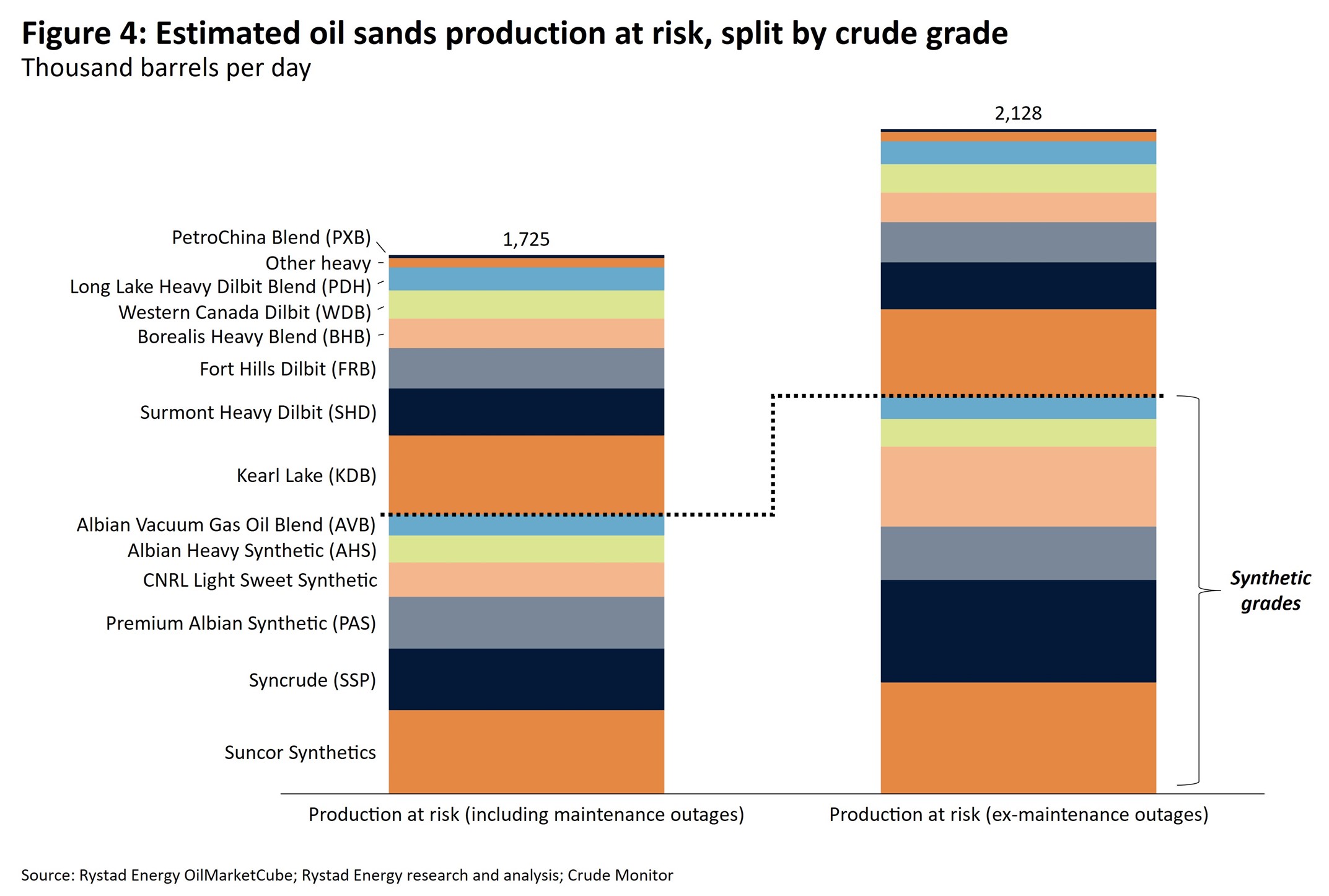More than 2 million bpd of oil sands output at risk in Alberta, says Rystad
Wildfire conditions in northeastern Alberta – the focus of the province’s oil sands industry – have worsened. Last week, on the afternoon of 14 May, the Regional Municipality of Wood Buffalo (RMWB) issued an evacuation order for several communities threatened by an out-of-control 209-square-kilometer (81-square-mile) wildfire southwest of Fort McMurray, prompting nearly 7,000 residents to flee their homes.
Although oil sands operators have not yet indicated any impacts to operations at the time this was written, Rystad Energy estimates that more than 2.1 million barrels per day (bpd) of marketable oil sands output could be at risk should conditions materially worsen, equating to around 2.6% of total crude oil and lease condensate supply. Although wildfire danger ratings have improved in the affected areas overnight, MFW-017 has not yet been held and the evacuation order remains in place, thus threats to production cannot be ruled out.
The evacuation order issued on 14 May is in effect for the Fort McMurray neighborhoods of Beacon Hill, Abasand, Prairie Creek, and Grayling Terrace, all of which interface areas of potential wildfire spread in the immediate term. Evacuation orders represent the most serious type of wildfire alert and require residents to evacuate within two hours of the announcement.
Additionally, alerts require residents to be prepared to evacuate within two hours of issuance of an evacuation order.

While oil sands operators have not yet indicated any impacts to upstream production or upgrading activities, it is worth assessing potential risks should evacuation orders be issued for the wider Fort McMurray area.
The current out-of-control fire – known simply as MWF-017 – is located on the right bank (south side) of the Athabasca River and also intersects with critical midstream infrastructure servicing the Horizon and Syncrude mining and upgrading projects. The closest areas of extraction include Suncor’s Base Operations, Syncrude, and the Long Lake thermal in-situ project (graphic above).
However, an evacuation order for Fort McMurray could impact a slew of service activities and projects further north. Additionally, the spread of wildfires further south could affect Long Lake and Surmont, which together produce more than 200,000 bpd and were both severely impacted by wildfires in May 2016.
The blaze harks back to the upheaval the industry experienced in the first half of 2016, when a major wildfire shook Fort McMurray and brought nearly 1 million bpd and 600,000 bpd off-line in May and June 2016 alone, respectively.

There are several differences between 2016 and the current fire. The 2016 fire had an abundance of coniferous forest crowns at its disposal, leading to a faster and more unpredictable spread. The current flora around Fort McMurray is still recovering from the events that took place eight years ago, thus, MFW-017 is spreading on the ground at a slower pace.
Still, wildfire seasons have only gotten more severe in the Western Canadian Sedimentary Basin (WCSB) in recent years. Throughout the spring and summer of 2023, they hit a wide swathe of short-cycle operations in northwestern Alberta and northeastern British Columbia. The industry entered into 2024 with a wary eye on conditions, as experts warned of a potentially more severe wildfire season due to limited snowpack over the winter months and continuing drought conditions.
In a worst-case scenario and based on current out-of-control wildfire perimeters, Rystad Energy estimates that up to 1.73 million bpd of marketable oil sands production could be at risk.
As shown above, however, a sizeable amount of planned maintenance is currently scheduled in May, which is typical of oil sands seasonality as the industry ramps production into the higher-demand summer driving season in North America.
Some of the larger maintenance impacts include a 28-day turnaround at Horizon, which CNRL indicated would begin in mid-May with an estimated 145,000-bpd impact for the month.

Additionally, Rystad Energy expects around 90,000 bpd and 130,000 bpd to come off-line at Suncor’s Base Ops and Syncrude, respectively, due to planned maintenance, while Kearl’s annual turnaround impact is likely to clock in below 50,000 bpd this month.
When excluding maintenance impacts, a worst-case scenario could impact up to 2.13 million bpd, representing around 2.6% of global crude and lease condensate production and potentially ushering in upside price volatility should more serious conditions emerge.
In either case, synthetic grades produced from upgrading facilities will likely see the largest impacts should the scenario mentioned above materialize, making up around 52% of affected volumes when accounting for maintenance impacts and closer to 60% of potentially affected production when excluding maintenance.
KEEPING THE ENERGY INDUSTRY CONNECTED
Subscribe to our newsletter and get the best of Energy Connects directly to your inbox each week.
By subscribing, you agree to the processing of your personal data by dmg events as described in the Privacy Policy.















